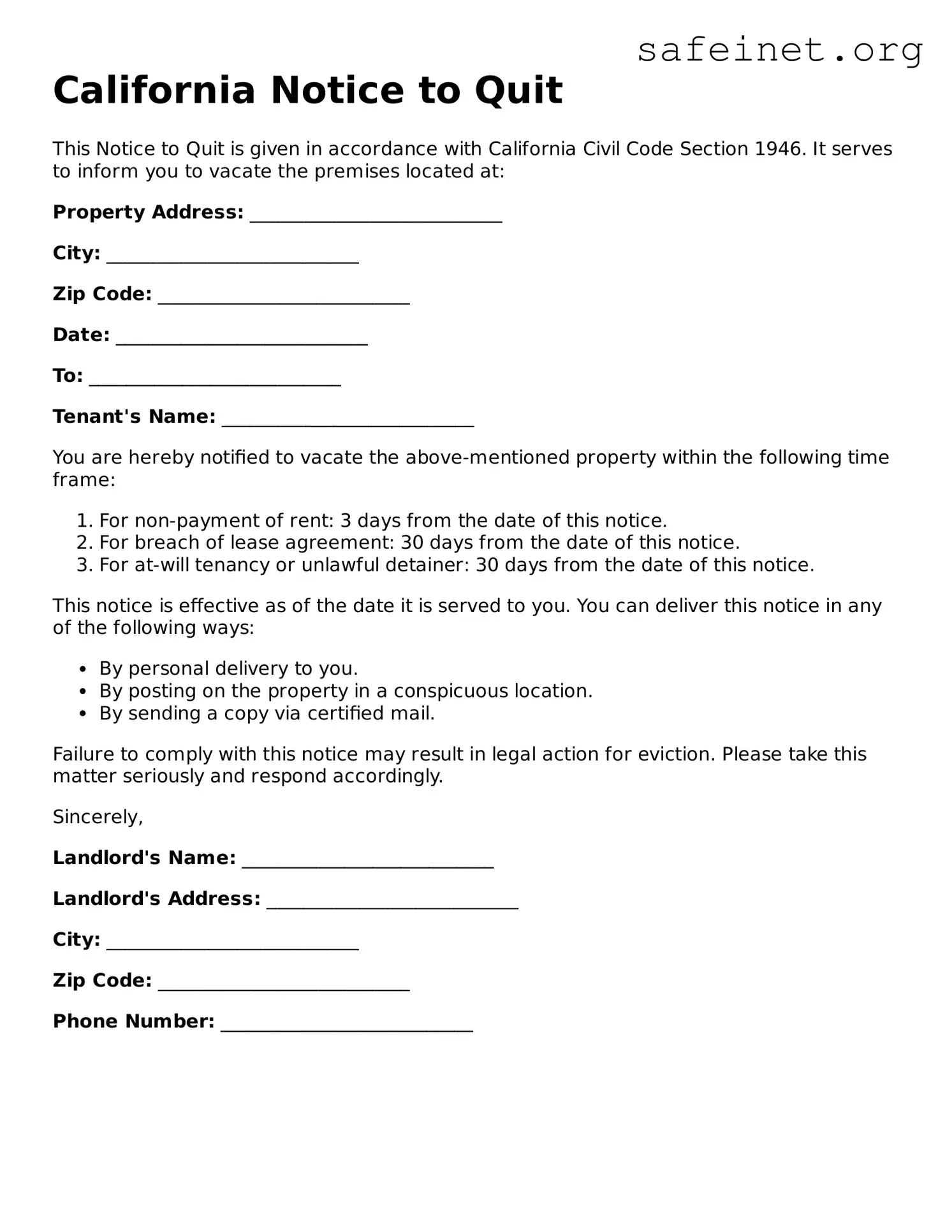What is a California Notice to Quit?
A California Notice to Quit is a legal document used by landlords to notify tenants that they must vacate the property. This notice typically includes a reason for eviction, such as non-payment of rent or violation of lease terms. It serves as the first step in the eviction process.
When is a Notice to Quit required?
A Notice to Quit is required in situations where a landlord wants to terminate a tenancy. This may occur for reasons such as failure to pay rent, lease violations, or when the lease has expired. In some cases, it can also be used in the event of a month-to-month tenancy at the end of the rental period.
How long does a tenant have to respond to a Notice to Quit?
The time frame for a tenant to respond to a Notice to Quit depends on the reason for the notice. For non-payment of rent, a tenant usually has three days to pay owed rent or vacate the property. For other lease violations, the notice may provide a period of 30 days to rectify the situation or move out.
What should be included in a Notice to Quit?
A Notice to Quit should include essential information such as the date of the notice, the tenant's name and address, the reason for the eviction, and the time frame for vacating the premises. It is also important to include the landlord's contact information and any relevant rental agreement details.
Can a tenant dispute a Notice to Quit?
Yes, a tenant can dispute a Notice to Quit. If the tenant believes the notice is unjust, they can communicate with the landlord to resolve the issue directly. If required, the tenant can also respond formally and defend their position in court, should eviction proceedings be initiated.
What happens if a tenant does not respond to a Notice to Quit?
If a tenant does not respond to a Notice to Quit, the landlord may proceed with eviction proceedings. This process often involves filing an unlawful detainer lawsuit, which may lead to a court hearing where a judge will decide the outcome.
Is a Notice to Quit the same as an eviction notice?
While a Notice to Quit is often the precursor to an eviction notice, they are not the same thing. The Notice to Quit informs the tenant that they must leave the premises, whereas an eviction notice is a legal document filed with the court following a tenant's failure to comply with the Notice to Quit.
What are some common reasons for a Notice to Quit?
Common reasons for issuing a Notice to Quit include failure to pay rent, violation of lease terms, engaging in illegal activities on the property, or having unauthorized occupants. Each of these reasons can justify the landlord's decision to initiate the eviction process.
Can a landlord issue a Notice to Quit without cause?
In California, landlords generally cannot issue a Notice to Quit without cause for tenants with a fixed-term lease. However, for month-to-month tenants, landlords may terminate the tenancy without cause, provided they give the required notice period—typically 30 days.
Where can I obtain a California Notice to Quit form?
A California Notice to Quit form can be obtained from various sources. Landlords may download it from legal websites, obtain it through local court offices, or consult office supply stores that offer legal forms. It is important to use the correct form that complies with California laws.
